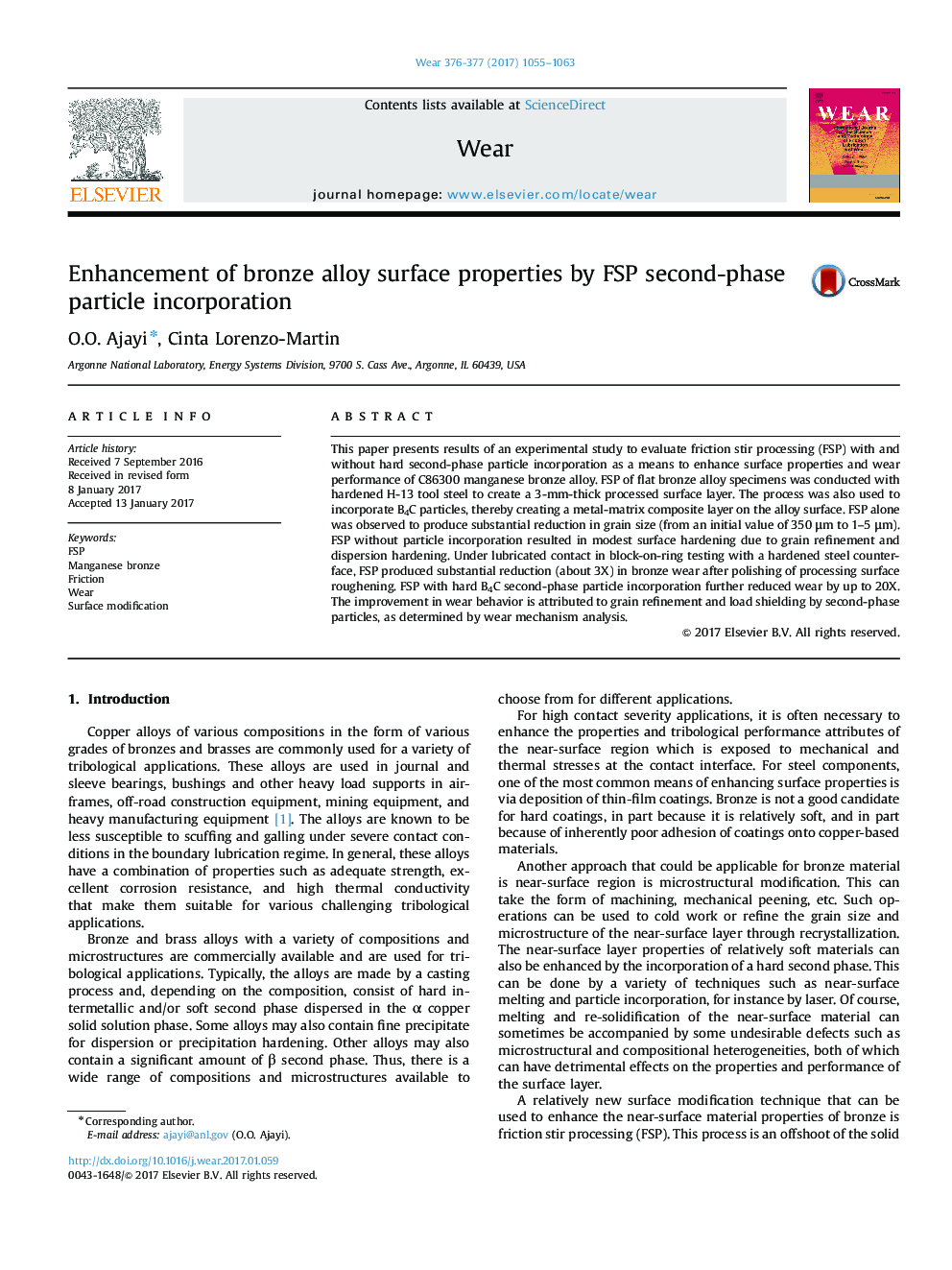| Article ID | Journal | Published Year | Pages | File Type |
|---|---|---|---|---|
| 4986547 | Wear | 2017 | 9 Pages |
Abstract
This paper presents results of an experimental study to evaluate friction stir processing (FSP) with and without hard second-phase particle incorporation as a means to enhance surface properties and wear performance of C86300 manganese bronze alloy. FSP of flat bronze alloy specimens was conducted with hardened H-13 tool steel to create a 3-mm-thick processed surface layer. The process was also used to incorporate B4C particles, thereby creating a metal-matrix composite layer on the alloy surface. FSP alone was observed to produce substantial reduction in grain size (from an initial value of 350 μm to 1-5 μm). FSP without particle incorporation resulted in modest surface hardening due to grain refinement and dispersion hardening. Under lubricated contact in block-on-ring testing with a hardened steel counterface, FSP produced substantial reduction (about 3X) in bronze wear after polishing of processing surface roughening. FSP with hard B4C second-phase particle incorporation further reduced wear by up to 20X. The improvement in wear behavior is attributed to grain refinement and load shielding by second-phase particles, as determined by wear mechanism analysis.
Keywords
Related Topics
Physical Sciences and Engineering
Chemical Engineering
Colloid and Surface Chemistry
Authors
O.O. Ajayi, Cinta Lorenzo-Martin,
